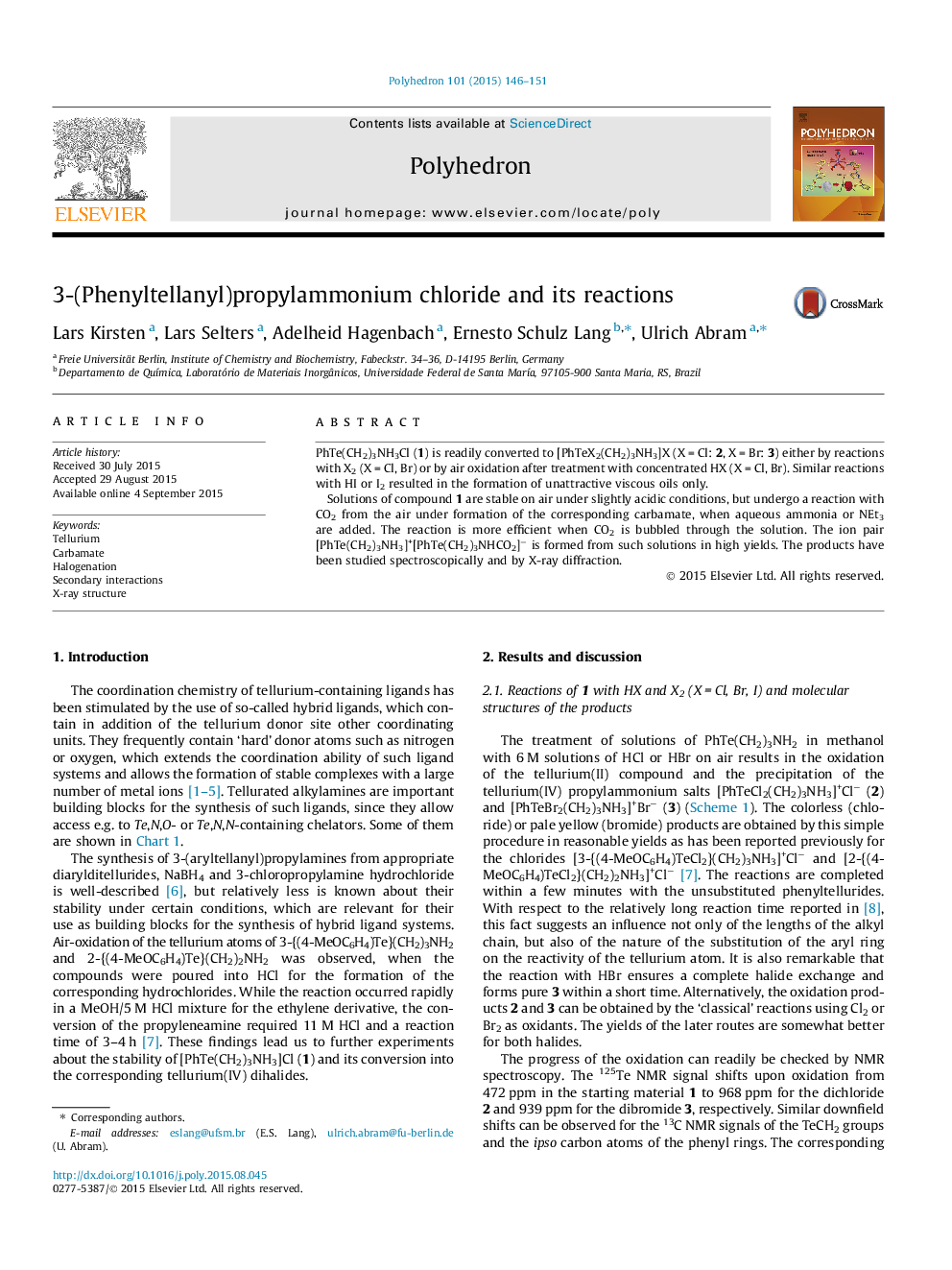| Article ID | Journal | Published Year | Pages | File Type |
|---|---|---|---|---|
| 1336827 | Polyhedron | 2015 | 6 Pages |
PhTe(CH2)3NH3Cl (1) is readily converted to [PhTeX2(CH2)3NH3]X (X = Cl: 2, X = Br: 3) either by reactions with X2 (X = Cl, Br) or by air oxidation after treatment with concentrated HX (X = Cl, Br). Similar reactions with HI or I2 resulted in the formation of unattractive viscous oils only.Solutions of compound 1 are stable on air under slightly acidic conditions, but undergo a reaction with CO2 from the air under formation of the corresponding carbamate, when aqueous ammonia or NEt3 are added. The reaction is more efficient when CO2 is bubbled through the solution. The ion pair [PhTe(CH2)3NH3]+[PhTe(CH2)3NHCO2]− is formed from such solutions in high yields. The products have been studied spectroscopically and by X-ray diffraction.
Graphical abstract3-(Phenyltellanyl)propylammonium chloride (1) is readily oxidized to the corresponding tellurium(IV) compounds by simple reactions with HX (X = Cl, Br) on air or by elemental chlorine or bromine. Reactions of 1 with CO2 give a carbamate, which forms a stable ion pair with the parent 3-(phenyltellanyl)propylammonium cation.Figure optionsDownload full-size imageDownload as PowerPoint slide
